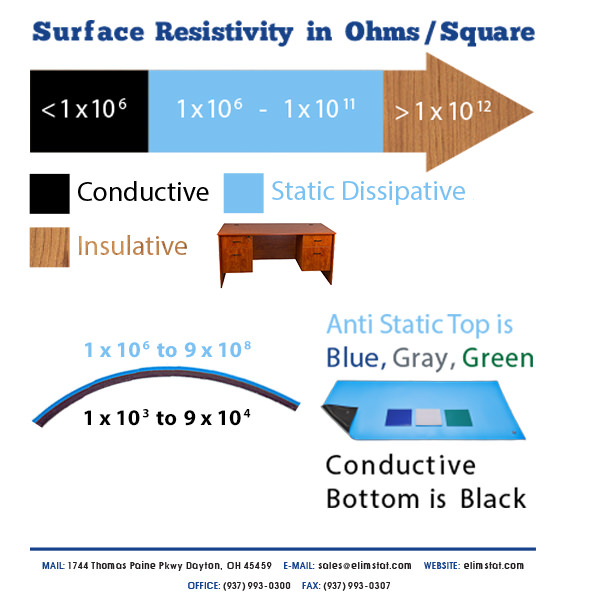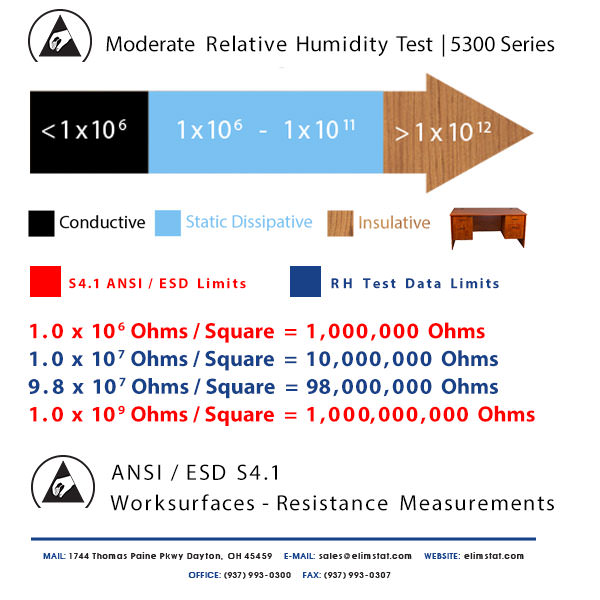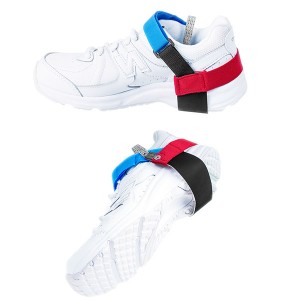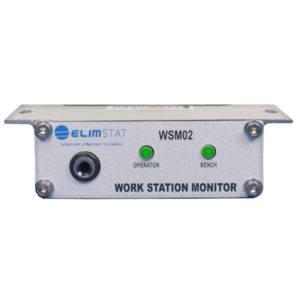Prices
| Sizes | Qty 1-9 | Qty 10+ |
|---|---|---|
| 2' x 3' | $55.60 USD | $44.88 USD |
| 2' x 4' | $68.30 USD | $54.64 USD |
| 2' x 5' | $81.00 USD | $64.80 USD |
| 2' x 6' | $93.70 USD | $74.96 USD |
| 30" x 5' (Blue) | $96.88 USD | $77.50 USD |
| 30" x 5' (Dark Blue, Gray, Green) | $115.67 USD | $101.97 USD |
Antistatic Work Mats are installed with (2) two snaps on the corners of the long side to connect common point ground, wrist straps, and monitors (if desired) separately.
| Sizes | Qty 1-9 | Qty 10+ |
|---|---|---|
| 2' x 3' | $55.60 USD | $44.88 USD |
| 2' x 4' | $68.30 USD | $54.64 USD |
| 2' x 5' | $81.00 USD | $64.80 USD |
| 2' x 6' | $93.70 USD | $74.96 USD |
| 30" x 5' (Blue) | $96.88 USD | $77.50 USD |
| 30" x 5' (Dark Blue, Gray, Green) | $115.67 USD | $101.97 USD |
► Meets ANSI / ESD STM 4.1 Standard using FTMS 101C Method 4046.
► Lead-Free. Recyclable. Meets European Union (EU) Restriction of Hazardous Substances Directive (RoHS) regulating the reuse of products used in electrical and electronic equipment.
| Properties | Units | Typical alues | Test Method |
|---|---|---|---|
| Material | - | Nitrile Butadiene Rubber / Carbon | - |
| Thickness | Inches | .08 | ASTM D-2103 |
| Thickness | Millimetres | 2 | ASTM D-2103 |
| Tensile Strength • Top Layer | kg / sq. cm | > 120 | ASTM D-412 |
| Tensile Strength • Bottom Layer | kg / sq. cm | > 160 | ASTM D-412 |
| Tear Strength • Top Layer | kg / sq. cm | > 90 | ASTM D-412 |
| Tear Strength • Bottom Layer | kg / sq. cm | > 100 | ASTM D-412 |
| Elongation • Top Layer | % | 350 | ASTM D-412 |
| Elongation • Bottom Layer | % | 250 | ASTM D-412 |
| Hardness • Top Layer | Shore A | 50 | ASTM D-2240 |
| Hardness • Bottom Layer | Shore A | 60 | ASTM D-2240 |
| Gravity • Top Layer | - | 1.3 | ASTM D-792 |
| Gravity • Bottom Layer | - | 1.4 | ASTM D-792 |
| ESD Surface Resistance • Top Layer | ohms / square | < 109 | ASTM D-257 |
| ESD Surface Resistance • Bottom Layer | ohms / square | < 105 | ASTM D-257 |
| Volume Resistivity • Top Layer | ohms / square | < 108 | ASTM D-257 |
| Volume Resistivity • Bottom Layer | ohms / square | < 104 | ASTM D-257 |
| Static Decay | seconds | < 0.01 | EIA-541 |
| Temperature Tolerance | Fahrenheit / Celsius | 187F / 86C | - |
The border line between conductive and static dissipative is 1 million ohms per square. This is also referred to as 1 meg ohm or 1 x 106 ohms / square.

To satisfy the ANSI / ESD S4.1 Worksurfaces – Resistance Measurements test standard the top static dissipative part of the mat was measured using resistance-to-groundable point and resistance point-to-point tests.
ANSI / ESD S4.1 guidelines at section 8.0 recommend resistance-to-groundable point (RTG) tests should find the top surface of grounded mats measure between 1 x 106 and 1 x 109 ohms / square.
Resistance point-to-point (also known as top-to-top or RTT) tests should measure the ESD resistance of the top surface of the mats at greater than or equal to 1 x 106 ohms / square.
As viewable in our diagrams, all 5300 Series mat samples were recorded within the acceptable range between 1 x 106 and 1 x 109 ohms / square, regardless of humidity, to meet the current S4.1 standard.

In our low relative humidity test, the sample with the least resistance measured 1.2 x 107 ohms / square.
The mat sample with the highest resistance measured 3.9 x 107 ohms / square.

In our moderate relative humidity test, the sample with the least resistance measured 1.0 x 107 ohms / square.
The mat sample with the highest resistance measured 9.8 x 107 ohms / square.


